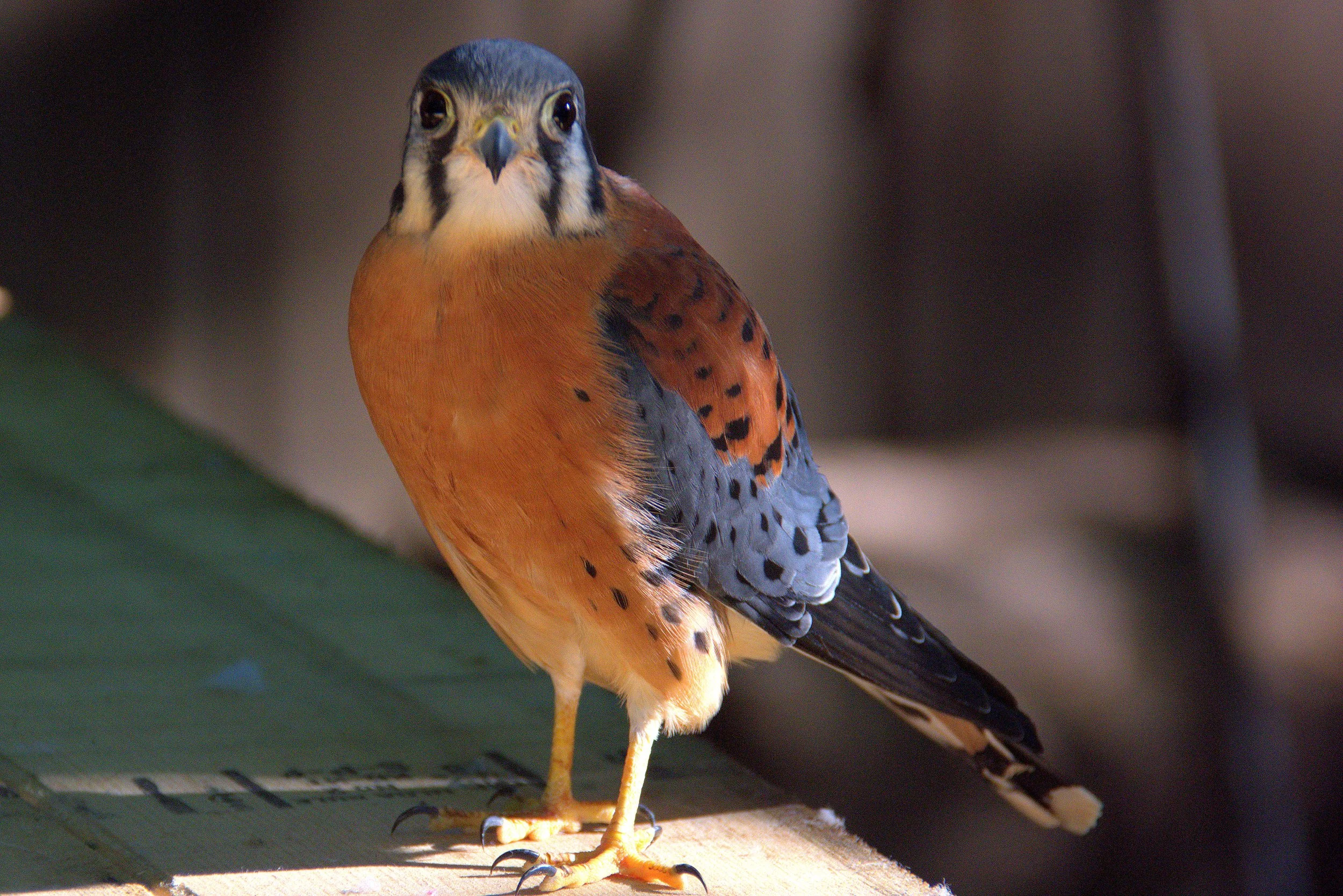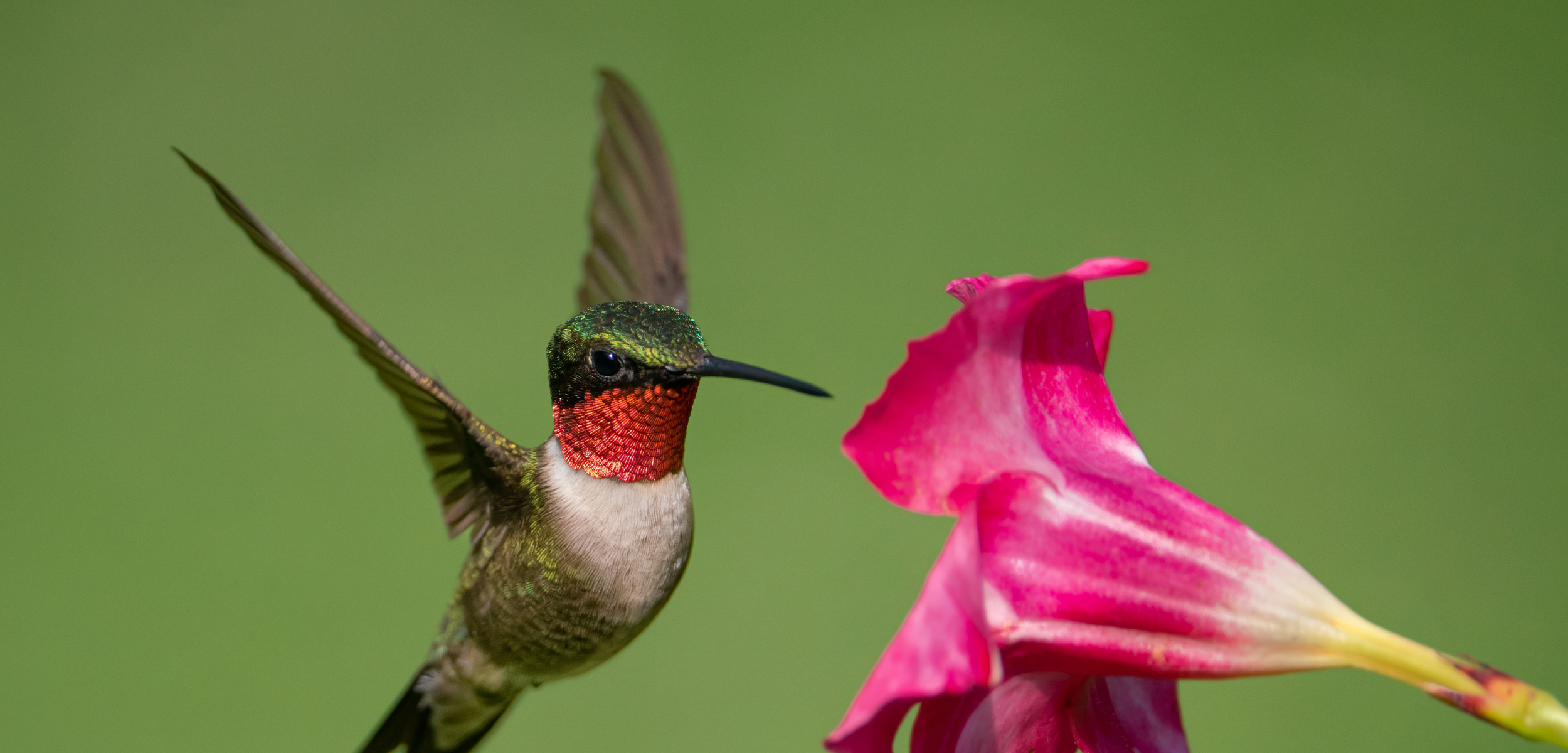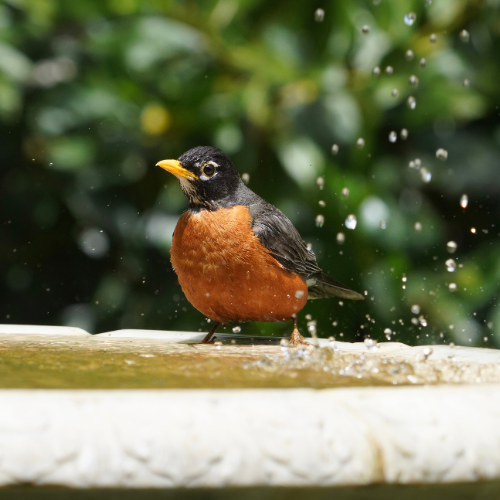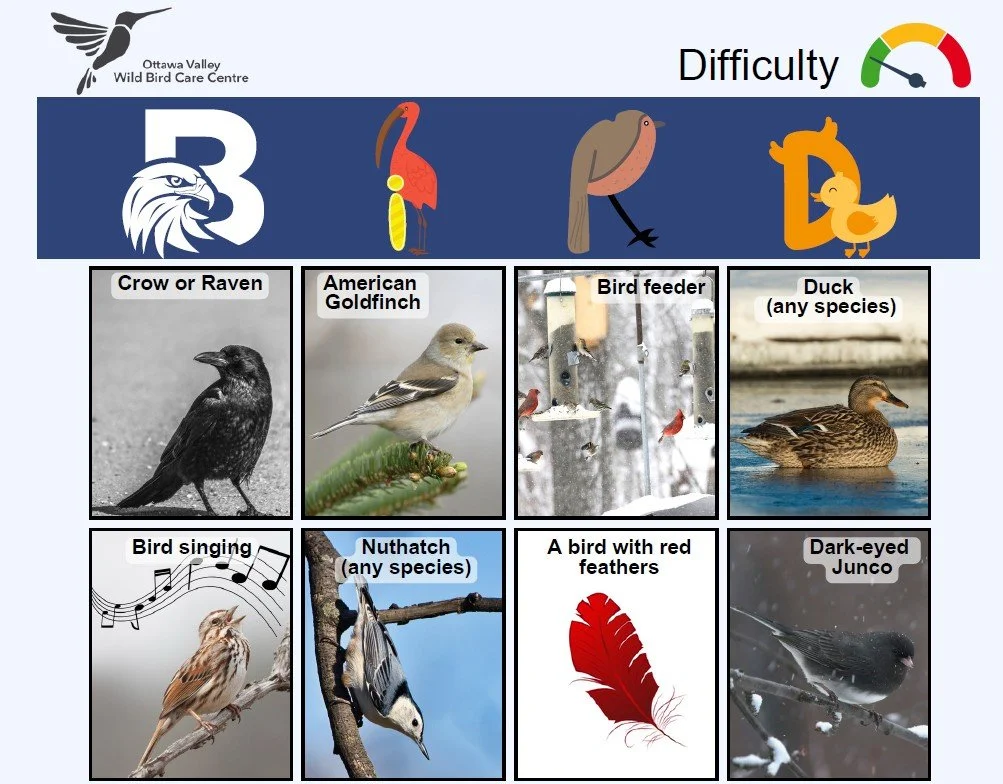
Learn With Us
September 2025 program update:
We are deeply saddened to share the loss of Indigo, our treasured Education Ambassador American Kestrel, who recently passed away after a short, natural decline in health at the age of 13.
-
Indigo’s story began in 2013, when he arrived at the Centre with an old, improperly healed wing fracture. Sadly, he had been kept too long by well-meaning rescuers, which meant his injury could no longer be repaired, and along with his trusting nature toward humans, made him unreleasable. While he could not return to the skies, Indigo found a new purpose—teaching people how to give injured birds the best chance at recovery by bringing them quickly to licensed rehabilitation centres.
He began his ambassador work modestly, with just a few dozen presentations each year. Before long, he became the face of the Centre’s Junior Avian Ambassador program and was making over 100 classroom and community visits annually. Over the course of his career, Indigo appeared in more than 600 presentations, many public events, social media posts, media segments, and even an episode of a children’s television show!
With his calm and engaging personality, Indigo captivated audiences everywhere, reminding us that wonder can be found in simply observing a wild bird being themselves. People delighted in his curious head-bobbing were outwitted by his “cheating” in staring contests with his transparent third eyelid, and smiled at his endearing habit of puffing up his feathers and making a leg “disappear” when he was relaxed.
Indigo inspired people of all ages to care more deeply for wild birds and the natural world. His legacy lives on in every person who now knows how to act quickly to help an injured bird, and in the countless wild birds who will benefit from safer, healthier habitats thanks to the awareness and practical tips Indigo helped share.Description text goes here
He was the only bird at the Centre with special permission to travel for presentations. Until we find a new suitable ambassador, our education program will not feature a live bird. We look forward to sharing exciting news about a new ambassador soon!
The Junior Avian Ambassador Program
Every presentation is a unique hands-on educational experience that raises awareness for wild birds and also helps provide life-saving care for injured wild birds at the Centre! Our presentations are one hour long and begin with a summary of the work we do at the Centre, the common reasons why wild birds become injured, and how our actions in our communities can make a difference.
The bulk of the presentation is grade/group-specific and covers aspects of the Ontario Science Curriculum in a unique and fun way.
At the end of the presentation, we will discuss how to respectfully observe birds and what to do if you find an injured bird. We also offer additional facilitated activities for a fee, and activity ideas for leaders to expand the group’s learning experience after the presentation.
Presentations are available 7 days a week, including evenings. Presentations can be done outdoors, weather permitting.
If you have any questions or would like to book a presentation for your group, please contact Patty McLaughlin:
Off-Site or In-Person Presentations
Indoors or Out
Presentation Fees*
$150 for a one-hour presentation. (book 2 or more on the same day receive a 10% discount) Curriculum-linked, printable activity ideas are provided to teachers/leaders upon request at no charge.
*A modest travel fee will be added for distances beyond 25 km from the Centre.
Additional facilitated add-on activities available:
Each activity requires an additional 30 minutes and is facilitated by our presenter. All materials are provided for up to 30 participants:
Owl pellet dissection $60
Bird themed craft $60
Bird walk with binoculars (32 pairs available) $60

Presentation Topics : Elementary Grades
-
In this presentation, we will explore the characteristics that define birds, how birds differ from other animals, and the unique features that distinguish different bird species from one another. Children will have the opportunity to engage in hands-on activities with authentic feathers, wings, beaks, and feet, as well as participate in interactive discussions and games to discover the answers to these questions.
-
During this presentation, we will delve deeper into the topic of biodiversity and communities by learning more about bird behaviour, and adaptations. We will explore how each species plays a vital role in their respective habitats, and how different species form communities, that can all thrive in the same ecosystem. Our discussion will cover various topics, including predator/prey relationships, food webs, ecosystem services, and species at risk. Through hands-on exploration of artifacts, photos, and bird identification apps, participants will learn tips and tricks for bird identification in the wild.
-
During this presentation, we will delve deeper into the topic of biodiversity and communities by learning more about bird behaviour, and adaptations. We will explore how each species plays a vital role in their respective habitats, and how different species form communities, that can all thrive in the same ecosystem. Our discussion will cover various topics, including predator/prey relationships, food webs, ecosystem services, and species at risk. Through hands-on exploration of artifacts, photos, and bird identification apps, participants will learn tips and tricks for bird identification in the wild.
-
During this presentation, participants will learn more about volunteering or working at the Centre through a PowerPoint presentation filled with photos and videos showcasing daily activities. We will discuss the crucial role of wild birds in various ecosystems, bird population trends, reasons for changes, and why our bird observations matter! Participants will explore wings, feet, beaks, and photos, and challenge their bird identification skills using a bird identification app. We will provide tips and tricks on how to complete a bird survey and introduce citizen science projects that are easy to participate in!
Presentation Topics - Adults
Adults (residences, community groups, etc.)
Through an engaging PowerPoint presentation filled with pictures and videos of birds at the Centre, your group will learn about the history of the Centre, what it is like caring for over 3,500 injured or orphaned birds each year, and interesting stories and facts about our patients. The remaining part of the presentation can be customized to meet the interests of your group from learning backyard bird identification tips, ways we can help our feathered friends, and of course, answering all your wild bird questions.
Want to do more for the birds?
Complete one of the 10 Junior Avian Ambassador Missions to help your backyard birds and earn an official Junior Avian Ambassador pin and certificate!
Find out more, click to view missions:
Family Fun
Download our free Bird Bingo Brochure





